Anti-infective agents are drugs utilized to exert effect on invading foreign organisms on the body, especially those which can cause infection.
Its scientific investigation started in the 1920s after Paul Ehrlich developed synthetic chemicals that would be effective only against the certain proteins or enzyme systems used only by infecting organism and not by human cells.
Drug resistance remains to be the major challenge in the use of anti-infectives against infections. Emergent strains are rapidly adapting to repel the effects of anti-infectives.
Table of Contents
- Mechanisms of Actions
- Therapeutic Action
- Resistance
- Prevention of Resistance
- Indications
- Adverse Effects
- Practice Test: Anti-infective Agents
- Recommended Resources
- See Also
- References and Sources
Mechanisms of Actions
Here is a table of commonly encountered anti-infectives that would best explain the principles of anti-infective therapy:
- Penicillins: Interferes with the biosynthesis of the pathogen cell wall.
- Sulfonamides, antimycobacterial, trimethoprim-sulfamethoxazole: Inhibits invading organisms from using substances essential to their growth or development.
- Aminoglycosides, macrolides, chloramphenicol: Interferes with steps involved in protein synthesis, thereby, rendering cell division non-functional.
- Fluoroquinolones: Interferes with DNA synthesis leading to inability to divide and ultimately, cell death.
- Antifungals, antiprotozoals: Alters the cell membrane permeability leading to leakage of essential cellular components causing cell death.
Therapeutic Action
Anti-infective agents act on invading organisms in several different ways as mentioned above.
- The goal of therapy is interference with the normal function of the invading organisms to prevent them from reproducing and thereby causing cell death.
- Narrow-spectrum anti-infectives are agents that are so selective in their action that they are effective against only a few microorganisms.
- Broad-spectrum anti-infectives are agents that interfere with biochemical reactions in many different kinds of microorganisms.
- Anti-infectives that can cause cell death are said to have bactericidal effects.
- Anti-infectives that can interfere with the ability of the cells to reproduce or divide are said to have bacteriostatic effects.
Resistance
Over time, invading pathogens develop resistance to anti-infectives.
Resistance is the ability over time to adapt to an anti-infective drug and produce cells that are no longer affected by a particular drug. Here are a number of ways that microorganisms can develop resistance:
- Enzyme production. Strains of bacteria that were once susceptible to penicillin can now produce an enzyme called penicillinase which inactivates penicillins before they can exert their effect to the bacteria.
- Cell membrane permeability alteration. This prevents the drug from entering the cell. Some bacteria alter transport systems to prevent the drug from being transported actively into the cell.
- Binding site alteration. Prevents the drug from being accepted into the cell.
- Chemical production. Acts as antagonist to the drug.
Vancomycin (Vancocin, Vancoled) is an antibiotic that interferes with cell wall synthesis in susceptible bacteria. This was developed as a result of a need for a drug that could be used for patients who are allergic to penicillin and cephalosporins as well as in treatment of patients who have staphylococcal infections resistant to penicillins and/or cephalosporins. It is highly-toxic that it is reserved only for certain situations as it can cause renal failure, ototoxicity, superinfections, and red man syndrome (sudden and severe hypotension, fever, chills, paresthesias, and erythema or redness of the neck and back).
Prevention of Resistance
Drug resistance and emergence of new strains remain a public health concern. Here are a number of ways in which nurses can facilitate prevention of resistance:
- Drug dosing. The nurse may collaborate with the physician for around-the-clock dosing to eliminate the peaks and valleys in drug concentration. This also helps maintain a constant therapeutic level to prevent the emergence of resistant microbes during times of low concentration.
- Drug duration. The nurse should emphasized the importance of finishing the prescribed duration (correct number of times each day for the full number of days) of anti-infective therapy to ensure that microbes are completely eliminated and are not given the chance to grow and develop resistant strains.
Indications
Here are some important aspects to remember for indication of anti-infectives:
Children
- Use with caution as early exposure can lead to early sensitivity.
- Use of antibiotics in pediatric ear infections (which might be a viral infection) may contribute to development of drug resistance.
- Children are susceptible to gastrointestinal (GI) and nervous system effects of anti-infectives so it is important to monitor their hydration and nutritional status carefully.
Adults
- This age group tend to demand for quick cure to various signs and symptoms. Therefore, drug allergies and emergence of resistant strains can be a big problem with this group.
- Extra caution is exercised in pregnant and lactating women because many of these agents have teratogenic effects to the fetus and can cross into breast milk.
Older adults
- They present with manifestations that are different than younger age groups so culture and sensitivity tests are important to determine the type and extent of infection.
- They are susceptible to severe GI, renal, and neurological effects and must be monitored for nutritional status and hydration during drug therapy.
- Their liver function should always be taken in consideration when planning for anti-infective therapy.
Adverse Effects
Use of anti-infectives may result to these adverse effects:
- Kidney damage. Drugs like aminoglycosides have direct toxic effect on the fragile cells in the kidney and can cause conditions ranging from renal dysfunction to full-blown renal failure. Patients should be kept well-hydrate throughout drug therapy course to facilitate drug excretion.
- GI toxicity. Many anti-infectives have direct toxic effects on the cells lining the GIT causing nausea, vomiting, stomach upset, and diarrhea. Some drugs have toxic effects on the liver causing hepatitis and even liver failure.
- Neurotoxicity. Some anti-infectives can damage or interfere with the function of nerve tissue, usually in areas where drugs tend to accumulate in high concentrations. For example, aminoglycoside antibiotics collect in the 8th cranial nerve and can cause dizziness, vertigo, and loss of hearing. Chloroquine, a drug for treatment of malaria can accumulate in the retina and optic nerve and cause blindness.
- Hypersensitivity Reactions. Most agents are protein bound for transfer through the cardiovascular system and are able to induce antibody formation in susceptible people. With next exposure, immediate or delayed allergic responses may occur.
- Superinfections. Broad-spectrum anti-infectives can destroy normal flora. Superinfections are infections that occur when opportunistic pathogens that were kept in check by normal flora bacteria have the opportunity to invade tissues. Common causes of superinfections are Proteus and Pseudomonas.
Practice Test: Anti-infective Agents
Here are some practice questions for this study guide. Please visit our nursing test bank page for more NCLEX practice questions.
1. This antibiotic can have an adverse effect of dizziness, vertigo, and loss of hearing.
A. Chloramphenicol
B. Aminoglycoside
C. Vancomycin
D. Fluoroquinolones
1. Answer: B. Aminoglycosides.
This antibiotic collect in the 8th cranial nerve causing neurotoxicity as manifested by dizziness, vertigo, and loss of hearing.
2. This anti-infective agent exerts its effect by interfering with steps in protein synthesis.
A. Macrolide
B. Sulfonamides
C. Antimycobacterial
D. Trimethoprim-sulfamethoxazole
2. Answer: A. Macrolide.
Options B, C, and D exert their effect by depriving the invading organisms of the essential substances they need for cell division or reproduction.
3. A 60 year old male patient on fourth day of his antibiotic therapy complains of dizziness and nausea. Which is the most appropriate nursing action?
A. Institute safety precaution and raise side rails.
B. Collaborate with the doctor about antibiotic therapy’s dosage and duration.
C. Provide comfort measures.
D. Instruct client to inform you if symptoms get worse.
3. Answer: B. Collaborate with the doctor about antibiotic therapy’s dosage and duration.
All other options are correct but it is best to address the main cause of the patient’s manifestations. Elderly patients are more sensitive to neurologic and GI adverse effects of drugs.
4. When an anti-infective agent is said to be no longer effective for a patient, the patient has developed:
A. Immunity
B. Tolerance
C. Non-responsiveness
D. Resistance
4. Answer: D. Resistance
It occurs when the cells of the invading pathogens no longer respond to the drug.
5. A middle-aged woman came to the ER and complains of ringing in the ears, paresthesias of the extremities, and erythema of the back. She also noticed that she had decreased urine output. What history of drug intake should the nurse ask?
A. Oral contraceptive pills (OCPs)
B. Antifungals
C. Vancomycin
D. Trimethoprim-sulfamethoxazole
5. Answer: C. Vancomycin.
Its toxicity includes ototoxicity, renal failure, and red man syndrome characterized by erythema on the neck and back, paresthesia, chills, severe hypotension, and fever.
Recommended Resources
Our recommended nursing pharmacology resources and books:
Disclosure: Included below are affiliate links from Amazon at no additional cost from you. We may earn a small commission from your purchase which will help support us. Thank you! For more information, check out our privacy policy.
Pharm Phlash! Pharmacology Flash Cards #1 BEST SELLER!
Test-yourself review cards put critical clinical information for nearly 400 of the top generic medications at your fingertips. And, you can count on them for accuracy, because each card is based on content from Davis’s Drug Guide for Nurses. Increase your test scores in pharmacology class.
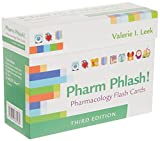
Focus on Pharmacology (8th Edition)
Focus on Nursing Pharmacology makes challenging concepts more approachable. Engaging learning features cultivate your clinical application, critical thinking and patient education capabilities. This updated 8th edition builds on your knowledge of physiology, chemistry and nursing fundamentals to help you conceptualize need-to-know information about each group of drugs.
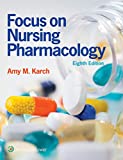
Pharmacology Made Incredibly Easy (Incredibly Easy! Series®)
Nursing pharmacology guide offers step-by-step guidance so you can grasp the fundamentals in enjoyable Incredibly Easy style. This is the perfect supplement to class materials, offering solid preparation for NCLEX® as well as a handy refresher for experienced nurses. Colorfully illustrated chapters offer clear, concise descriptions of crucial nursing pharmacology concepts and procedures.
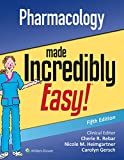
Lehne’s Pharmacology for Nursing Care (11th Edition)
The Eleventh Edition of Lehne’s Pharmacology for Nursing Care provides a thorough understanding of key drugs and their implications for nursing care. This text, written by renowned nursing educators, helps you comprehend and apply pharmacology principles. A clear and engaging writing style simplifies complex concepts, making even the most challenging pharmacology content enjoyable. We recommend this book if you want a comprehensive nursing pharmacology guide.
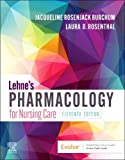
Nursing Drug Handbook
Nursing2023 Drug Handbook delivers evidence-based, nursing-focused drug monographs for nearly 3700 generic, brand-name, and combination drugs. With a tabbed, alphabetical organization and a “New Drugs” section, NDH2023 makes it easy to check drug facts on the spot.
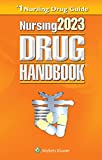
Pharmacology and the Nursing Process
The 10th edition of Pharmacology and the Nursing Process offers practical, user-friendly pharmacology information. The photo atlas contains over 100 unique illustrations and photographs depicting drug administration techniques. Updated drug content reflects the most recent FDA drug approvals, withdrawals, and therapeutic uses.
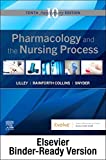
Mosby’s Pharmacology Memory NoteCards: Visual, Mnemonic, and Memory Aids for Nurses
The 6th edition of Mosby’s Pharmacology Memory NoteCards: Visual, Mnemonic, & Memory Aids for Nurses incorporates illustrations and humor to make studying easier and more enjoyable. This unique pharmacology review can be utilized as a spiral-bound notebook or as individual flashcards, making it ideal for mobile study.
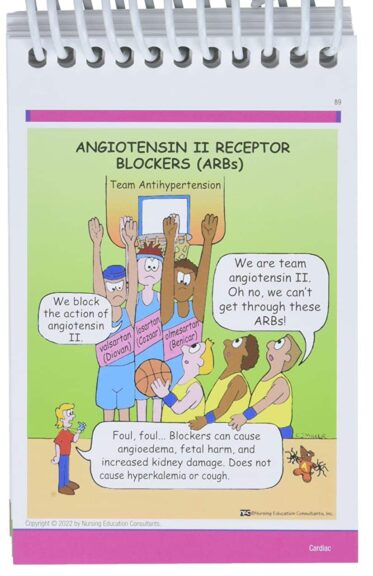
See Also
Here are other nursing pharmacology study guides:
- Nursing Pharmacology – Study Guide for Nurses
Our collection of topics related to nursing pharmacology - Pharmacology Nursing Mnemonics & Tips
These nursing mnemonics aim to simplify the concepts of pharmacology through the use of a simple, concise guide. - Generic Drug Name Stems Cheat Sheet
Learn about these generic drug name stems to help you make sense of drugs easier! - Common Drugs and Their Antidotes
A guide to drug antidotes that nurses should be familiar about. - IV Fluids and Solutions Guide & Cheat Sheet
Get to know the different types of intravenous solutions or IV fluids in this guide and cheat sheet. - Drug Dosage Calculations NCLEX Practice Questions (100+ Items)
Care to take the challenge? This quiz aims to help students and registered nurses alike grasp and master the concepts of medication calculation.
Drug Guides NEW!
Individual drug guides and nursing considerations for the most common medications used in nursing pharmacology:
- Acetaminophen (Tylenol)
- Aspirin
- Atorvastatin (Lipitor)
- Enoxaparin (Lovenox)
- Furosemide (Lasix)
- Gabapentin
- Hydromorphone (Dilaudid)
- Lisinopril
- Metoprolol
- Morphine
Gastrointestinal System Drugs
Respiratory System Drugs
- Antihistamines
- Bronchodilators and Antiasthmatics
- Decongestants
- Expectorants and Mucolytics
- Inhaled Steroids
- Lung Surfactants
Endocrine System Drugs
- Adrenocortical Agents
- Antidiabetic Agents
- Glucose-Elevating Agents
- Hypothalamic Agents
- Insulin
- Parathyroid Agents: Bisphosphonates, Calcitonins
- Pituitary Drugs
- Sulfonylureas
- Thyroid Agents
Autonomic Nervous System Drugs
- Adrenergic Agonists (Sympathomimetics)
- Adrenergic Antagonists (Sympatholytics)
- Anticholinergics (Parasympatholytics)
- Cholinergic Agonists (Parasympathomimetics)
Immune System Drugs
Chemotherapeutic Agents
- Anthelmintics
- Anti-Infective Drugs
- Antibiotics
- Antifungals
- Antineoplastic Agents
- Antiprotozoal Drugs
- Antiviral Drugs
Reproductive System Drugs
Nervous System Drugs
- Antidepressants
- Antiparkinsonism Drugs
- Antiseizure Drugs
- Anxiolytics and Hypnotic Drugs
- General and Local Anesthetics
- Muscle Relaxants
- Narcotics, Narcotic Agonists, and Antimigraine Agents
- Neuromuscular Junction Blocking Agents
- Psychotherapeutic Drugs
Cardiovascular System Drugs
References and Sources
References and sources for this pharmacology guide for Anti-Infective Agents:
- Karch, A. M., & Karch. (2011). Focus on nursing pharmacology. Wolters Kluwer Health/Lippincott Williams & Wilkins. [Link]
- Katzung, B. G. (2017). Basic and clinical pharmacology. McGraw-Hill Education.
- Lehne, R. A., Moore, L. A., Crosby, L. J., & Hamilton, D. B. (2004). Pharmacology for nursing care.
- Smeltzer, S. C., & Bare, B. G. (1992). Brunner & Suddarth’s textbook of medical-surgical nursing. Philadelphia: JB Lippincott.
